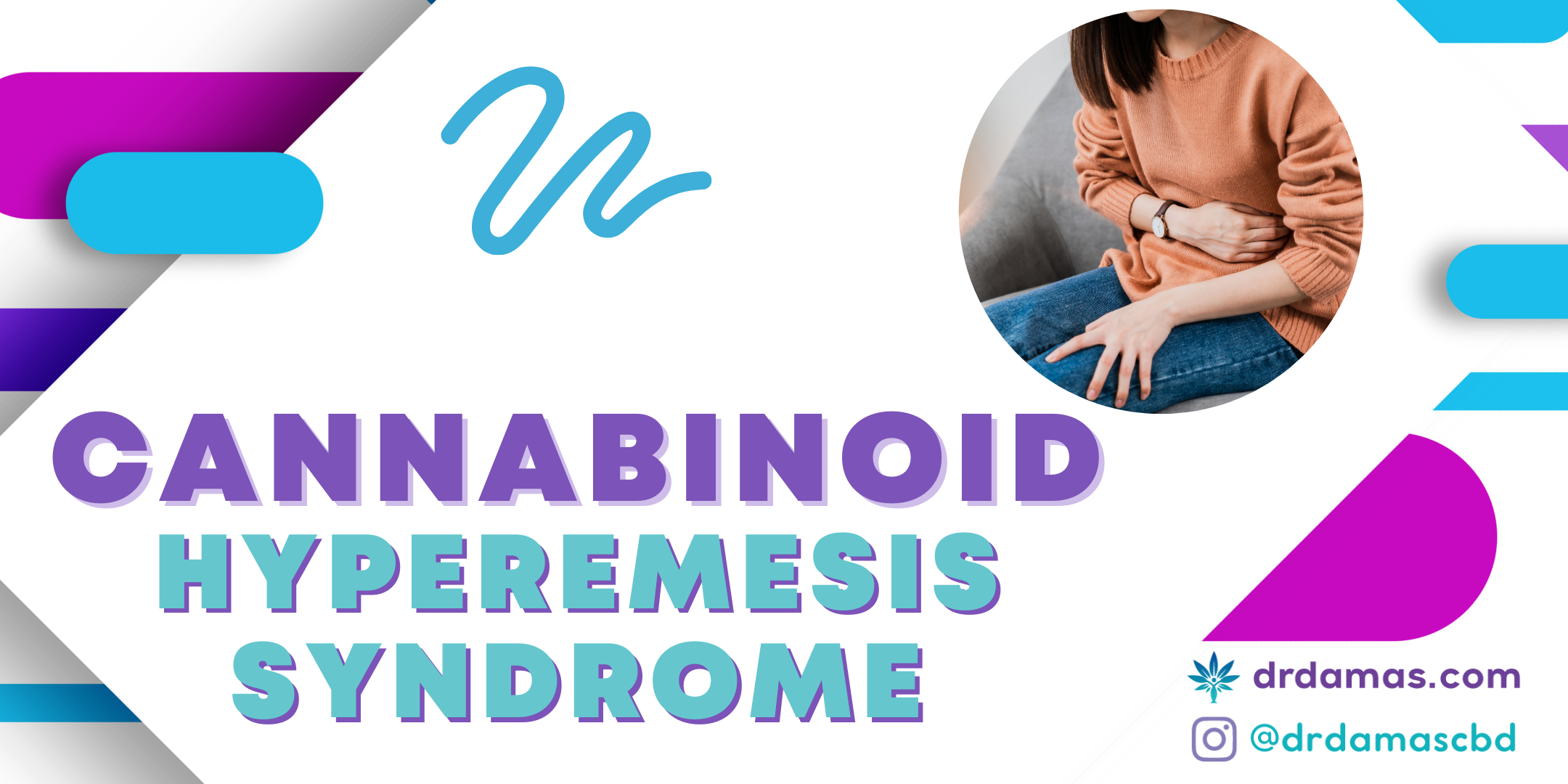Cannabinoid Hyperemesis Syndrome (CHS)
Cannabinoid hyperemesis syndrome (CHS) is a rare condition that causes recurrent episodes of nausea, vomiting, and abdominal pain. It is most commonly seen in people who have used cannabis (marijuana) for a long period of time, typically daily. The symptoms of CHS can be severe and debilitating, and can often lead to hospitalization.
What is CHS?
CHS is a relatively new condition, and the exact cause is still unknown. However, it is thought to be caused by an overactive response of the body's endocannabinoid system to cannabis. The endocannabinoid system is a network of receptors and chemicals that play a role in a variety of bodily functions, including appetite, pain, and nausea. When cannabis is used, it binds to these receptors and can cause a variety of effects, including relaxation, euphoria, and increased appetite. However, in people with CHS, the endocannabinoid system becomes overactive and can cause nausea, vomiting, and abdominal pain.
Symptoms of CHS
The symptoms of CHS can vary from person to person, but they typically include:
- Severe nausea and vomiting
- Abdominal pain
- Hot baths or showers to relieve symptoms
- Dehydration
- Weight loss
- Fatigue
- Anxiety
- Depression
Diagnosis of CHS
There is no definitive test for CHS, and it can be difficult to diagnose. However, doctors may consider the following factors when making a diagnosis:
- History of long-term cannabis use
- Symptoms of nausea, vomiting, and abdominal pain
- Relief of symptoms with hot baths or showers
- Dehydration
- Weight loss
- Other medical conditions that can cause nausea and vomiting
Prevention of CHS
The best way to prevent CHS is to avoid using cannabis. If you do use cannabis, it is important to use it in moderation and to not use it daily. If you start to experience symptoms of CHS, it is important to stop using cannabis and to see a doctor.
Statistical Incidence of CHS
CHS is a relatively rare condition, but it is becoming more common. The first case of CHS was reported in 2004, and since then there have been over 1000 reported cases. The incidence of CHS appears to be increasing, and this may be due to the increasing legalization and availability of cannabis.
Trends in CHS
There are a few trends that have been observed in CHS. First, the condition is most commonly seen in men, with a male to female ratio of about 2:1. Second, the average age of onset for CHS is 30 years old. Third, most people with CHS have used cannabis for at least 10 years, and many have used it daily for many years.
Theories to Explain the Trends in CHS
There are a few theories to explain why CHS is more common in men, why it typically occurs in people who have used cannabis for many years, and why it is becoming more common. One theory is that men are more likely to use cannabis than women, and that they are also more likely to use it more heavily.
Another theory is that the endocannabinoid system may be different in men than in women, and that this may make men more susceptible to CHS. One prominent idea suggests that the higher concentrations of THC in modern cannabis strains may trigger dysregulation of the endocannabinoid system, leading to CHS symptoms. Another theory proposes that long-term exposure to cannabinoids may disrupt normal gastrointestinal motility and function, resulting in the development of CHS. Lastly, many experts point to the increasing legalization and availability of cannabis as a major contributor to the increasing incidence of CHS.
Precautions People Should Take
If you use cannabis, it is important to be aware of the risks of CHS. If you start to experience symptoms of CHS, it is important to stop using cannabis and to see a doctor. There are a few things you can do to reduce your risk of developing CHS:
- Use cannabis in moderation.
- Do not use cannabis daily.
- Take breaks from using cannabis.
- If you start to experience symptoms of CHS, stop using cannabis and see a doctor.
Potential Treatments for CHS
There is no specific medication for CHS. The primary treatment for CHS involves discontinuing cannabis use. Symptoms generally resolve within a few days to weeks after cessation. While there is no cure for CHS, there are treatments that can help relieve the symptoms:
Supportive care, including fluid and electrolyte replacement, antiemetics, and pain management, can help alleviate symptoms during episodes. Topical analgesics like capsaicin cream application to the abdomen has also shown promising results. Interestingly, hot showers or baths provide temporary relief for individuals experiencing an episode of CHS, a unique characteristic not commonly seen in other vomiting disorders.
Despite the best efforts, in some cases, the vomiting may be so severe that people may need to be hospitalized.
Conclusion
If you're someone who regularly uses cannabis, it's important to have some understanding of Cannabis Hyperemesis Syndrome (CHS), a complex condition that can occur with chronic cannabis use. Although we don't know the exact cause of CHS yet, the growing number of cases has put it on the radar of healthcare professionals. By understanding CHS, its connection to cyclic vomiting disorders, and taking necessary precautions, you can reduce the risk of developing this condition.
For those who are already experiencing symptoms of CHS, there is hope. Immediately discontinue cannabis use and seek appropriate medical guidance, although symptoms often resolve on their own. Remember, it's crucial to have open and honest discussions with healthcare professionals who can provide the necessary support and management strategies.
Take care of yourself and stay informed about the potential risks associated with cannabis use. By being proactive and making informed decisions, you can minimize the chances of unwanted experiences like Cannabis Hyperemesis Syndrome.
References:
- Allen, J. H., Hutchinson, M. R., & Hecht, F. M. (2004). Cannabinoid hyperemesis syndrome: A case series. The American Journal of Medicine, 117(11), 1022-1025.
- Bloch, M. (2018). Cannabinoid hyperemesis syndrome. Current Opinion in Gastroenterology, 34(1), 40-45.
- Castle, S. E., & Wallach, J. D. (2017). Cannabinoid hyperemesis syndrome: A review. Current Gastroenterology Reports, 19(1), 15.
- Deutsch, L. J., & Surawicz, T. S. (2016). Cannabinoid hyperemesis syndrome: A new clinical entity. Gastroenterology, 150(7), 1790-1796.
- Hazem, A., & Chaudhuri, A. (2019). Cannabinoid hyperemesis syndrome: A review of the literature. The American Journal of Emergency Medicine, 37(1), 108-113.
- Howlett, A. C., & Gallily, R. (2015). Cannabinoid receptors and their ligands: Biochemistry, structure, function, and clinical relevance. Neuropharmacology, 98, 1-14.
- Le Foll, B., & Hall, W. (2014). Cannabinoid hyperemesis syndrome: A review. Addiction, 109(1), 15-24.
- National Academies of Sciences, Engineering, and Medicine. (2017). The health effects of cannabis and cannabinoids: The current state of evidence and recommendations for research. Washington, DC: The National Academies Press.
- Perry, E. R., & Jones, A. M. (2018). Cannabinoid hyperemesis syndrome: A case series and review of the literature. Journal of Emergency Medicine, 55(5), 721-727.
- Ware, M. A., & Strain, E. C. (2018). Cannabinoid hyperemesis syndrome: Diagnosis and management. Current Psychiatry Reports, 20(10), 55.















